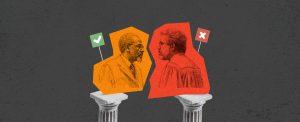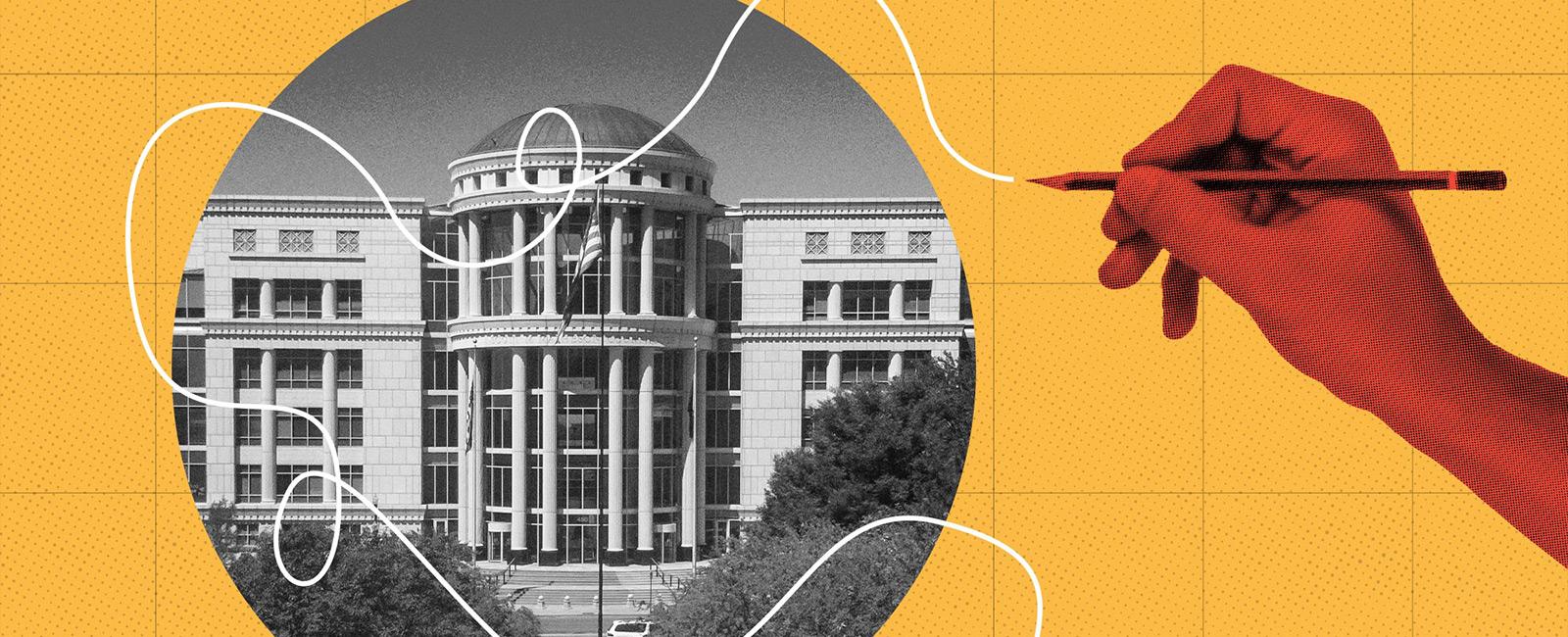Occupational licensing reform has gained significant momentum across the U.S. since the Obama administration shed light on the impacts of occupational licensing in a 2015 report and urged states to take action.
But while many states approach reform in a one-off manner, Utah is taking an innovative and systematic approach with its Office of Professional Licensure Review (OPLR). Officially launched in July 2022 within the state’s Department of Commerce, which oversees occupational licensing, OPLR has a mandate of reviewing all of Utah’s licensed occupations at least once every 10 years and reviewing applications to establish new licensed occupations. Each year, the OPLR team identifies which occupations should be reviewed and provides the legislature with objective, data-driven recommendations on how licensure requirements can be improved, if necessary.
In this Q&A series, Margaret Busse, executive director of Utah’s Department of Commerce, and Jeff Shumway, director of OPLR, join Ascend Magazine Editor Paul Leavoy to discuss occupational licensing reform in Utah and the work of OPLR so far. Part 1 of their conversation touches on the history of occupational licensure and licensing reform in Utah, the creation of OPLR and how it approaches prioritizing occupations for review, the reasons behind the current shortage of mental health practitioners in Utah and how changing licensing requirements can help address it, and much more.
Note: this conversation has been edited for length and clarity.
Paul Leavoy: Can you tell me about the history of occupational licensure and licensing reform in Utah?
Margaret Busse: I don’t know that the history of it is that different from other states. What I do know is that back in the 1950s, it was only about 5% of professions that were regulated through licensure, and now we have anywhere between 25% and 40% regulated. So it’s grown a lot. Over the last five to 10 years there’s been a growing, even bipartisan, recognition that maybe we’re over licensed or maybe we’re not doing it the right way, and that it’s holding people back from participating in the economy and it might be driving up costs and decreasing access to those professional services.
In the past five years, Utah has been very progressive in looking at how we can loosen up some of our licensing or at least make it easier for people to work. Some examples of that are, a couple of years ago there was a law passed to make sure that when previously incarcerated individuals are coming out and trying to rejoin the workforce they are not prohibited from every type of licensure, whereas before they were. Now it’s more targeted to the type of crime they may have committed.
Another thing that Utah did was create a law called licensing by endorsement, which said if we have similar regulations to another state for a particular profession, instead of having someone redo all their licensure and go through all the training and requirements, we just endorse that license, and you can start working. We also just passed a law last legislative session to allow people coming in from foreign countries to have a pathway to get a license in our state.
Jeff Shumway: I would add two other things that I think are unique in Utah. One is – and this is relevant since the N.C. Dental opinion from the Supreme Court – our licensing boards do not have authority to do licensing on their own. They are advisory to the division of professional licensure, which is under Margaret.
The other thing is that the expansion of occupational licensing Margaret was talking about – about 5% of all workers were regulated in the 1950s, now the estimate is about 22% – that figure comes from surveys. We did an internal census of the licenses across the entire executive branch in Utah, and we came out to about 38% of the workforce that is regulated in some way. I think it’s telling that the survey data and the internal census came up with quite different numbers because a lot of people don’t think of their food handlers’ permit or their cosmetology license potentially as occupational regulation, so they don’t respond that way. But internally, we know that it’s actually quite a high number and most people aren’t using that number, they’re using the 22-25% figure.
Margaret Busse: And I think this gets us to that idea of the unseen economic force of professional licensing. Maybe people understand that for their profession they have to get a license, but they don’t often understand the breadth of the regulation on the workforce and how that affects our entire economy. It has implications for higher ed because if you have certain requirements to be a social worker or cosmetologist or whatever it is, those are the requirements that higher ed programs are going to then create, so then they have a vested interest in those requirements and if you want to lower them or change them, it disrupts them and it can disrupt their business model. Licensing has this massive economic consequence in our society that I think has gone underappreciated.
Paul Leavoy: What led to the creation of OPLR?
Margaret Busse: We’ve seen a lot of one-off reforms in Utah, but a lot of these reforms were propelled by a change in practice, or by an ideological preference, etc. What we realized is that we need a more systematic approach to this. We know we’re probably over-licensed overall, but we’re just doing it piecemeal and in an unorganized way. That can be hard for the industry because so much is built up around what these licensure requirements are, so we wanted to be able to give industry more of an expected process. We wanted to make sure that this review process would also be able to keep our regulations relevant. There’s all sorts of things that happen in professions that change. Technology changes professions – does that need to change the requirements that we have? Does that need to change the scope of practice we have? So it’s a way for us to be relevant. And third, it’s a way for us to start unleashing some reform in professional licensing.
Paul Leavoy: Did you have any models that you looked at in creating the department? Did you look to other states or anywhere else in the world?
Margaret Busse: We did look around and did a lot of benchmarking. We talked to organizations at the national level that are very familiar with licensure, like the Institute for Justice and other organizations like that. We have a state think tank that does a lot of intellectual work around licensing, so we talked to them. We did look at a couple of states – Vermont and Colorado have something a little similar, but we wanted to learn from what they felt wasn’t working as much and what could work better. And then we did a ton of stakeholder outreach to understand how we could best craft the office to make it most effective. It was a lot of work to try to put together what we hope will be the model for the country.
Paul Leavoy: How did you prioritize licenses for review? Did you take a risk-based approach or an impact approach?
Jeff Shumway: I have to come clean here, my background is not in government; I’m new to this. I’m a social impact strategist by training, and I’ve been doing that for 20 years, so my natural inclination was to come in and say, where’s the biggest impact going to be for the Utah public? The other thing that was clear to me was that I didn’t want to be doing this one-off, I wanted to be doing groups of occupations where we could get some expertise, build a network of people to draw on, and be smart. There are some natural groupings of occupations that are high impact, such as medical doctors and dentists and everything related. But the one we landed on [to review first] was mental and behavioral health occupations.
We looked at impact in a couple of ways. One is – how many active licensees are there? How big is it in the economy? How many substantiated complaints are there against that occupation? We wanted to have some proxy for harm; do we think there’s harm to the public going on here? Then we also looked at projected job openings into the future using the VOS data collected by our department of workforce services. That gave us some quantitative measures to say what’s important in the market and in the community.
Then we also did a lot of subjective work talking to legislators and other members of the community to say, what are people ready to move on? What’s going to get traction? Because we don’t want to do all this analytical work and reform work and then write a report that doesn’t cause any change. In the end, it was more the subjective work that told us that [behavioral and mental health] is where to look immediately, because talking to legislators and others, this is a big deal in Utah. We have high prevalence of mental illness, high prevalence of suicides – especially among youth – and it’s just not consistent with the kind of Utah that I used to live in, so it was important to do that right off the bat.
I should say this too: there’s this movement within people thinking about professional licensure reform to hack away at the undergrowth – so the professions that really shouldn’t be licensed, that should just be certified or registered. I think that’s interesting and needs to be done. What’s more interesting to me is that in these high-impact occupations that are critical to the functioning of society, that we know need regulation of some sort, how do we get the balance right? We’re not saying we need to un-license a psychologist; we’re saying we need to figure out the balance between protection from harm and adequate supply of competent and trained individuals. That balance is trickier in that context – for a doctor, for a nurse, for a mental health therapist – than it is for some of the others that we talk about a lot.
Margaret Busse: And again, what the state is trying to do, or should be trying to do, is protect the public from harm. Licensure shouldn’t necessarily be a proxy for quality, that can be done in a different way. It’s not necessarily the state’s interest to ensure quality. And that’s where it sometimes gets muddled.
Let me say a couple more things about what Jeff has been doing which has been really brilliant. The idea is instead of just looking at 15 license types – and one’s plumbing, and one’s a family therapist, and one’s a cosmetologist – we’re going to group them all together so that he can do a system-level analysis on how to improve this profession, give the public more access to the profession, and potentially reduce cost to the public. But taking all the related licenses together is what enables him to do that. And then he can look at the higher ed programs and the staffing ratios and all of that because it can be done in a systematic approach. We have a critical need. We’re in a mental health crisis – not just Utah, the entire country. We have a mental health counsellor shortage right now, so this is something that is ripe for disruption.
Paul Leavoy: Have you come across any surprising findings in your work so far?
Jeff Shumway: I’ve learned a ton. The whole idea that licensure is largely driven by licensed practitioners – by those who are in the profession – I don’t think I knew that. The way that licensing is developed in the U.S., it’s essentially an extension of the guild, and licensing boards – up until N.C. Dental – have quite a bit of power to regulate in any way they see fit. And in a lot of cases I think it’s clearly to the benefit of the Utah public; I’m not saying that this is all protectionism, I don’t think that’s what’s driving most of it. I think much of it comes from a place of wanting to have integrity in the profession and high quality within the profession, which is admirable and good and serves the public well. But the balance of the public need for access to these professionals and services is interesting and that’s not represented in statute and rule in the same way that some of the other pieces are.
Margaret: Evidence suggests that as requirements go up for licensing, wages go up for those licensed professionals, which means that costs go up. It’s not always done for a nefarious reason, but what they’re not taking into account is that when you do that, you’re potentially blocking people from getting into the profession, so you might be putting the rest of the public at risk because they can’t access those services. And mental health is a perfect example of that. There are not enough practitioners.
Paul Leavoy: Why is there such a shortage of mental health practitioners in Utah right now?
Jeff Shumway: If you think of what it takes to become a medical doctor, it takes about 10 years. To become a master’s-level mental health therapist, that takes eight, and for a psychologist it takes 10. So we’re essentially saying that you have to have the same level of training that you need for surgery and other medical practices. I don’t know if that’s appropriate or not, but that’s a high bar. They come out of school with a certain amount of debt, and we’re paying them a lot less than we pay doctors, so there’s a cost-benefit analysis there that doesn’t quite square up, and that has to do with choices we’re making around how we reimburse mental health services.
There’s also the higher ed question. In Utah at least, there’s this fascinating situation where if you go to the public technical colleges, every single one of them has certificates and associate degrees in trades, nursing, phlebotomy, and all these things. I did a quick survey, and there’s one associate degree in social work – that’s about it. We don’t have the certificates, the associates, and not many people are going through a Bachelor of Social Work. And yet, social workers are the vast majority of those providing mental health and behavioral health services in the state, especially at the master’s level.
We’ve done a bit of a disservice by not doing appropriate outreach and not making clear where the public need is for people coming through higher ed. People come in thinking they’re interested in mental health, and they go into psychology, but once you go into psychology you can’t do an advanced standing master’s, which cuts off a year, so there’s all sorts of things in the higher ed system that are slowing us down or not drawing people into appropriate courses from the beginning. And then, of course, there’s just the fact that it’s a hard job, and the turnover and the burnout and the burden – especially in the public mental health system – is quite high.
Read Part 2 of Paul Leavoy’s Q&A with Margaret Busse and Jeff Shumway, where they discuss how the OPLR is measuring success and what’s next for their work, foreign credentialing, the importance of stakeholder engagement, and much more.
To hear their full conversation, listen to this recent episode of the Ascend Radio podcast.
MORE VOICES ARTICLES

Do regulators deserve deference?
In a pivotal moment for regulatory law, the U.S. Supreme Court’s review of the Chevron doctrine could redefine the bounds of deference courts give to regulatory agencies, potentially inviting more challenges to their authority. This critical examination strikes at the heart of longstanding legal principles, signaling a significant shift in the landscape of regulatory oversight and its interpretation by the judiciary.

From Frankenstein to Siri: Accountability in the era of automation
As AI advances in sectors from health care to engineering, who will be held accountable if it causes harm? And as human decision-makers are replaced by algorithms in more situations, what will happen to uniquely human variables like empathy and compassion? Harry Cayton explores these questions in his latest article.

Regulating joy: The risky business of festivities
In his final Voices article of 2023, Harry Cayton reflects on our enthusiasm for participating in cultural festivities that often cause injuries or even deaths, which has led some governments to attempt to regulate these risky celebrations.

Building my regulator of tomorrow with LEGO® bricks
What should the regulator of tomorrow look like? While there may be no definitive vision, contributor Rick Borges gets creative with answering this important question, drawing inspiration from a favorite toy to ‘build’ a model of an effective future regulator.

‘Thin’ and ‘thick’ rules of regulation: Cayton reviews Daston’s history of what we live by
Lorraine Daston explores fascinating examples of rulemaking throughout history in her new book, ‘Rules: A Short History of What We Live By.’ In this article, Harry Cayton discusses what regulators can learn from Daston’s work.

Regulation in financial services: Is it more effective 15 years after the global financial crisis?
The lessons learned in the aftermath of the 2008-09 global financial crisis led to changes in regulation around the world. Fifteen years after the onset of the crisis, Rick Borges reflects on the effectiveness of regulatory measures put in place to prevent a similar catastrophe from occurring in the future.








